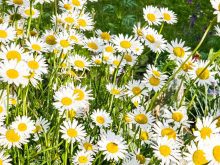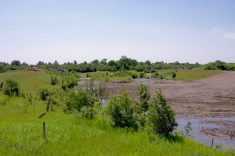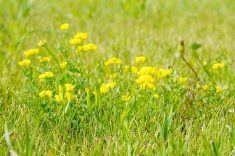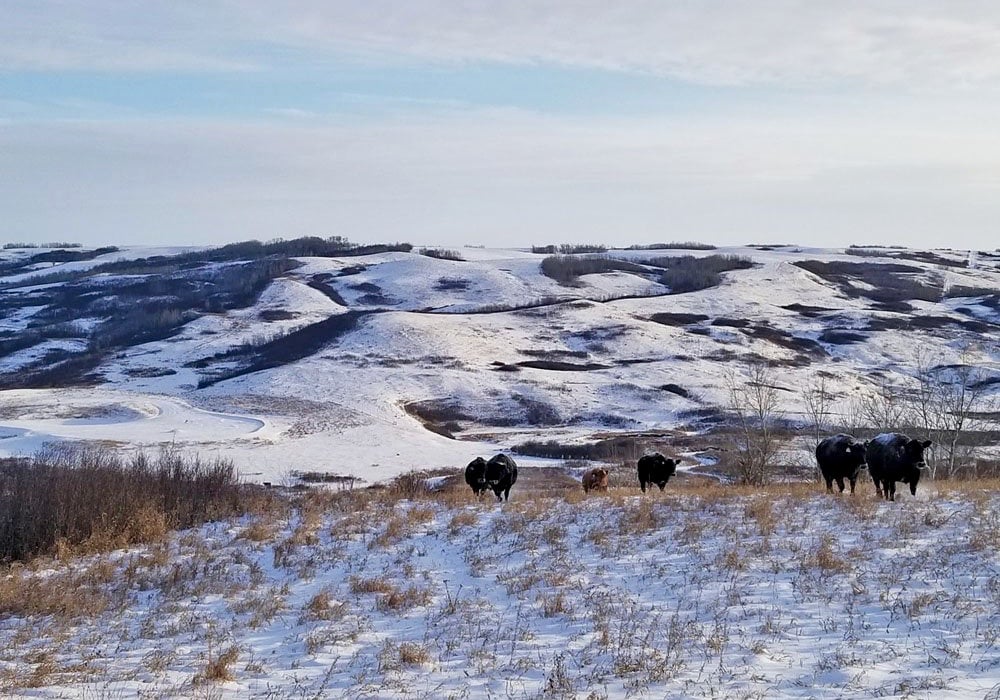Grazing hayfields this fall is an option for keeping livestock out as long as possible, says a provincial forage and beef specialist.
“Most hay stands will have a significant amount of alfalfa in them,” said Karen Lindquist. “Higher-quality hay typically needs to have a legume component to provide sufficient protein and energy to meet animals’ needs. The grass component of a hay stand is more beneficial for grazing than a pure alfalfa stand, and alfalfa still poses a bloat risk in the fall.”
The best time to begin grazing alfalfa-grass stands is after mid-September when plants have begun to slow growth and go into dormancy.
Read Also

Farming Smarter receives financial boost from Alberta government for potato research
Farming Smarter near Lethbridge got a boost to its research equipment, thanks to the Alberta government’s increase in funding for research associations.
“This time frame is also past the 45 to 60-day critical growth period, starting from the first of August, that alfalfa plants need to prevent winterkill,” said Lindquist. “Alfalfa must be able to put energy down into its crown and roots to survive winter and to use those energy stores for regrowth in the spring.”
Fibre content is higher, but digestible protein and energy content are lower when plants have already reached maturity and are going into dormancy.
“That makes the plants harder for ruminants to digest,” she said. “It lowers bloat risk especially when cattle are first introduced onto hay stands. However, there is still some risk of bloat, so management practices to reduce incidences are still good to keep in mind.”
Lindquist recommends introducing animals to a hay stand in the middle of the day and when they are not hungry.
“If you have access to some hay or straw, leave a bale or two out for them for the first four to five days. As well, having access to another forage stand that is predominantly grass may also work, especially if hay is in short supply. Check on them at least twice a day during this first week, as you may have some chronic bloaters that will need to be removed as soon as possible.”
Nitrate toxicity with alfalfa is not an issue because most hay stands are usually not fertilized. “Nitrates are more of a problem with annual cereals such as barley or oats,” she said. “However, frost tends to increase digestibility of the plants because it breaks apart the plant cell walls, making its contents more readily available to rumen microbes.
“This is a cause for concern, particularly when introducing animals onto hay stands. Avoiding introductions in the morning and supplying a more fibrous feed source will help.”
Once animals are adjusted to the hay stand, it is best not to remove them from that stand, even at night.
“They would need to be reintroduced to the stand using the same practices that you would have used when they first entered the hayfield. It is best to leave them there for as long as you need them to graze that stand.”















